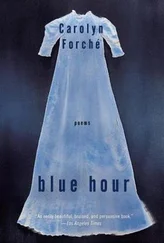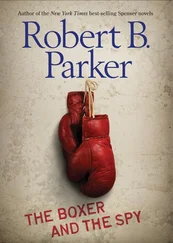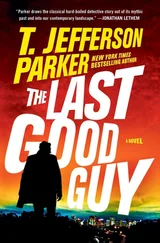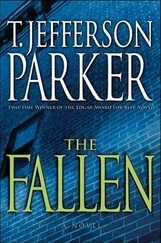“Why’d you come over in the first place, then?”
“To make sure you were okay. Didn’t want you to kick all the walls in.”
She thought about this. “I’m okay. Look, it’s good if you go. I’m better off alone when I’m like this.”
“I know.”
Hess parked and walked across the sand to the lifeguard stand at 15th Street. He could feel the dampness on his cheeks and in his ankles. He climbed the stand and sat on the platform with his back against the house and watched the silver-black Pacific ripple under a sky shot with stars.
He began a prayer but fell asleep. He woke from a dream in which a huge bird crashed through a mirror and emerged on the other side as a Porti-Boy embalming machine. His watch said 4:54 A.M.
He made coffee, paced his apartment, looked at his new head in the bathroom medicine cabinet mirror. Left side. Right side. Front. Pretty different, really. The smoothness looked okay but the color was bad, kind of a yellow, like there wasn’t enough blood behind it, or the blood had turned clear. Borderline anemic. Bonnie the beauty would have to embalm me with plenty of flesh tone, he thought. He kept looking at his pale, hairless reflection.
The mirror glass was old and thin at the edges but it gave a true likeness, Hess thought. He opened the door and tried to read the name of the maker inside, but the ink on the sticker had succumbed to the decades.
Mirrors, he thought: mirrors in dreams, mirrors for baldness, mirrored walls not installed, steamed mirrors in Merci’s bathroom, and what was it Colesceau had said, Send me through the looking glass again?
It was the again part that bothered Hess. Why again?
Because Holtz had taken him out the back door before.
But why? The mob hadn’t been there before.
Goddamned Colesceau again, he thought. Inside my brain like a tumor that won’t stop growing. Age. Repetition. Senescence.
He turned the TV to local news. For a moment he considered the screen, how it looked kind of like a mirror but had its own images inside.
Unless you turn it off. Then you could do whatever you wanted in front of the dark gray screen, and see yourself doing it.
He turned it off and looked at himself. With the living room lamp behind him, the reflection was surprisingly good: a bald old man with a sharp face. He could even see the wig on its faceless foam stand in the background, $89, human hair.
An idea. He got Rick Hjorth’s pictures from his briefcase and the enlargements that Gilliam’s people had produced. He found the Saturday, August 14, 8:12 P.M. shot that showed Colesceau downstairs in front of the TV, and set it aside. What he wanted was a picture of Colesceau watching TV with no picture on.
But no luck. Probably not enough light, Hess thought: and why would Colesceau sit in front of the tube without turning it on?
He looked through the pictures again. They showed him now what they had shown him before: that Colesceau sat watching TV in his apartment while Ronnie Stevens was slaughtered at a construction site on Main Street in Santa Ana.
Enough, he thought. It’s... not... him.
Hess sighed and shook his head. It was 5:10 now. Without real purpose, he dealt the photographs onto the yellow dinette tabletop, like cards in a game of solitaire. He turned them up one at a time, studying each. Then he grouped them by subject: the interior shots of Colesceau, taken through the crack in the blinds; exterior shots of Colesceau on his porch; exterior shots of the apartment, taken from the street to show both the lower and upper floors; the protesters; law enforcement; media. He’d done all this before and learned little.
Hess looked out the window again. The years have become minutes and this is what we do with our lives. As a protest against the passage of time, Hess rearranged the pictures according to sequence: an act of small order in a world of grand chaos.
Of course, he’d done this before and learned little, too. The date/time feature was a help but it couldn’t show what wasn’t there.
But now, as he gazed over the time line again for no better reason than to be doing what was apparently useful, something caught his attention. Something he’d seen but not thought about, looked at but not noticed. Just an oddity, really, a question. He could feel the gears starting to mesh now, the teeth coming together, the wheels starting to turn.
The 8:21 P.M. exterior shot showed both the downstairs and upstairs lights were off.
The 8:22 interior shot, taken through a crack in the blinds, showed Colesceau watching TV.
So far, so good, thought Hess.
Then an 8:25 exterior showed the upstairs light on.
Okay, he either went upstairs or used a convenience switch downstairs. Simple enough.
Another 8:25 exterior showed the upstairs light off again.
Still all right.
But the next interior shot, taken at 8:25, showed Colesceau watching TV.
Why hadn’t Hjorth taken a picture as Colesceau came back to the couch? Every shooter’s prize: a picture of his subject’s face? Why had he waited until Colesceau turned his back to him and sat back down? He’d already shot the back of Colesceau’s head, at 8:22. Why again?
He flipped his blue notebook open to Rick Hjorth’s number, and dialed it.
He got an answering machine, but identified himself and waited. Sure enough, Hjorth picked up.
“Man, it’s early, Detective.”
“It’s quarter to six.”
“Did my pictures help?”
“Maybe. I want to know why you don’t have a picture of Colesceau’s face. I mean, after he turned off the upstairs lights and came back to the couch to watch TV. You let him turn his back, sit down and get settled. I know you got to the window fast because both of your outside shots and the Colesceau shot were all taken at 8:25. You were fast.”
“Well, not fast enough. See, I can’t tell you the times but the light upstairs was pretty much off all night. Then it went on and I thought I’d document it. And I liked the way the lit window showed up against the sky. Then the light went off real fast — it was only on for a second, like he just wanted to check his watch or something — so I figured he was done upstairs and he’d come down to the TV again. And I realized I could get a face shot. So I ran to the window, to shoot through the crack. But he was already sitting there. I was totally bummed. It was like he never even moved.”
Like he never even moved, thought Hess.
Like someone other than Colesceau had turned the light on and off again.
Like someone upstairs had made a mistake with the light, caught himself, switched it back off in a hurry while Colesceau watched TV.
“Thank you,” he said, and hung up. He checked his watch against the softening darkness beyond the window glass. It was 5:48.
Hess stood then, his heart chugging a little faster, his mind alert. He looked at the wig, touched it. He went to the window and looked toward the ocean but what he saw was the inside of Colesceau’s house: the beige carpet, the white walls, the rough acoustic ceiling, lawyer’s bookshelves filled with painted eggs, the TV, the stairway leading up. Then, upstairs, Hess pictured the main bedroom on the left: Colesceau’s narrow bed neatly made with its brown spread, the bright yellow Shelby Cobra poster from Pratt Automotive on the wall, the dresser top littered with change and movie ticket stubs, the framed poster of the castle on the mountaintop. Next Hess pictured the spare bedroom, the lonely black plastic crucifix hanging on the wall opposite the bed with the Jesus who, facing his own image in mirrored glass, had struck Hess as the loneliest savior he’d ever seen.
Читать дальше












